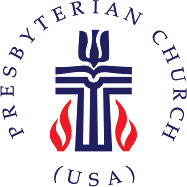
Although I, like a lot of people, do use Twitter from time to time, I have to confess that I've never really gotten all that comfortable with it, and thus I tend to read other people's posts there more often than I make my own (although you're still welcome to follow me @NicodemusLegend). A couple of days ago, a section of the PC(USA) web site that I hadn't seen previously was brought to my attention via the Presbyterian account, containing a list of "Frequently Asked Questions" on Theology and Worship. I'm really glad that the PC(USA) web site is doing this kind of thing. There's a lot of background that those of us who have been in the denomination for a long time can take for granted that may be confusing to newcomers (or even other long-timers that have never had occasion to look at that background in depth).
Because it pertains especially to the purpose of this weekly feature, I'd like to quote from the part of that page that pertains to the lectionary.
With that background in mind, here are the passages for August 30th, 2009, the Twenty-Second Sunday in Ordinary Time (Year B). All links are to the NRSV via the PC(USA) Devotions and Readings website, but if you prefer another translation, feel free to use that instead.What is the lectionary? How do we use it?
A lectionary (from the Latin lectio for “selection” or “reading”) is a set of scripture readings chosen for use in worship. Since at least the fourth century, churches have arranged selections of scripture to accompany the church year and/or to allow for continuous readings of books of the Bible from one Sunday to the next. The word “lectionary” can either refer to a simple table of readings or a book that includes the full texts of the scriptures for each day.
The Revised Common Lectionary, prepared in 1992 by the ecumenical Consultation on Common Texts, is modeled on its precursors, the Common Lectionary (1983) and the Roman Catholic Lectionary for Mass (1969). The Revised Common Lectionary is now used by many of the major denominations in North America. This lectionary provides for a broadly representative sample of Old and New Testament texts and themes, while taking into account the seasons and festivals of the Christian year....
The primary intent of the lectionary is to encourage a disciplined reading of the whole range of the biblical witness in worship. The lectionary can also be an invaluable tool in the coordination of preaching, worship planning, liturgical art, music leadership and Christian education throughout a congregation or denomination. Furthermore, the widespread use of the lectionary allows for ecumenical conversation about the texts for the week (as at a gathering of local clergy) and a resource for personal reflection on scripture.
Song of Solomon 2:8-13
- It's not all that often that the lectionary uses a reading from Song of Solomon (also often referred to as the "Song of Songs"). This is at least partly because it's a rather short book (only 117 verses total), but also (at least some suggest) because of the nature of Song of Solomon as a poem depicting a sexual romance, which (for whatever reason) isn't dealt with as explicitly in church as some would like. What do you think?
- Personally, I think at least one other impediment to the Song's widespread use is the fact that, as a poem written so many centuries ago, it contains imagery that seems very alien to us today (there are some truly bizarre examples in parts of the poem not included in this reading). Indeed, the idea of an admirer "gazing in at the windows, looking through the lattice" sounds a bit creepy, like a stalker, today. How would you attempt to communicate the intentions of this passage to a modern audience?
James 1:17-27
- I'm struck by James' instructions that we should be "slow to anger. For [our] anger does not produce God's righteousness." Would James rather we never become angry? If so, why not tell us not to become angry rather than just suggest we be slow to do so. If not, does our anger still fail to produce God's righteousness? What good purpose could our becoming angry yield, as James would see it?
- James stresses the need for "doing," for action quite a bit in his letter. Although there is no definitive contradiction with Reformed doctrines emphasizing grace over works in terms of our salvation, there is a clear tension to be had here. How can we emphasize what James is stressing with such great importance, without conveying a message that deemphasizes God's grace?
- There is a sense that, even though Mark was written for an audience more or less contemporary (in time) with the culture being described, the customs were different enough that traditions such as "hand washing" had to be described in at least some detail. Why did Mark find it necessarily to go through this explanation? What might his audience have missed if he had failed to do so, that it was important that they understand?
- In fact, there is some disagreement as to whether it was really the case that "all the Jews" had to maintain this practice, or only some (some evidence suggests that only priests were required to ceremonially wash their hands as described, even in Jesus' time). Why did the Jews maintain this hand washing custom (however many that did), and what, despite Christ's argumentation against it, was good about the practice?
- Jesus accuses the Pharisees of "abandon[ing] the commandment of God [to] hold to human tradition." I'm sure that the Pharisees might disagree about "hand washing" being a purely human tradition, but what was it that they had abandoned that Jesus was so upset about?








No comments:
Post a Comment